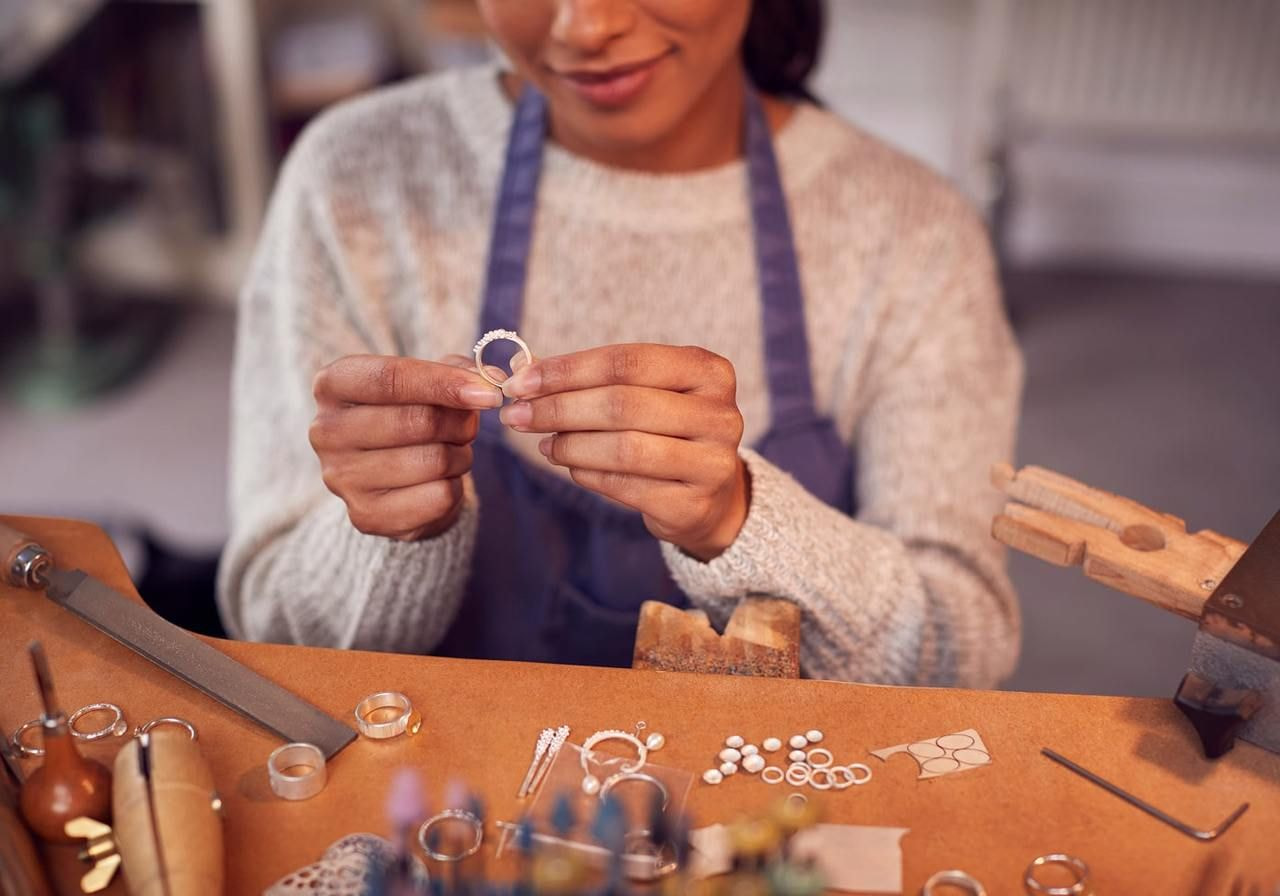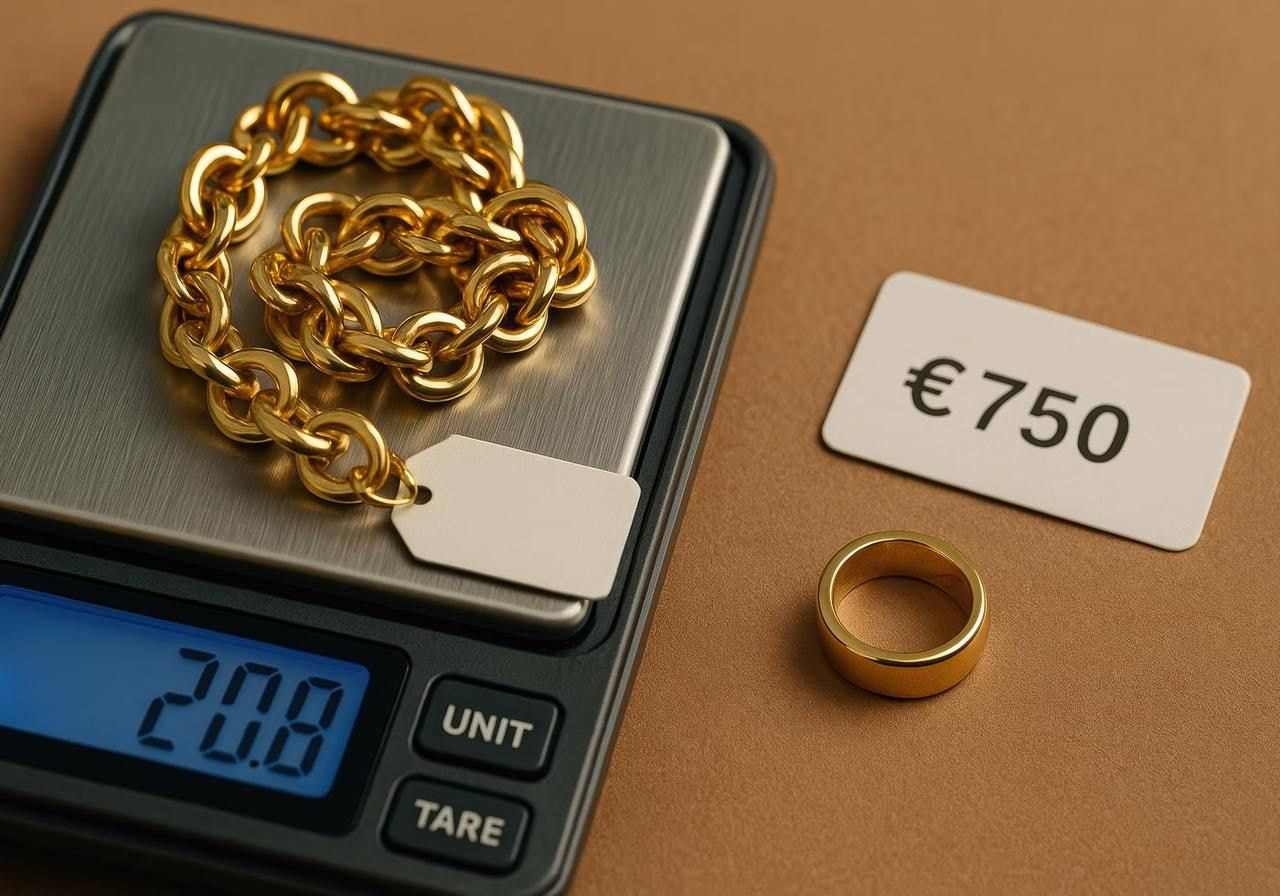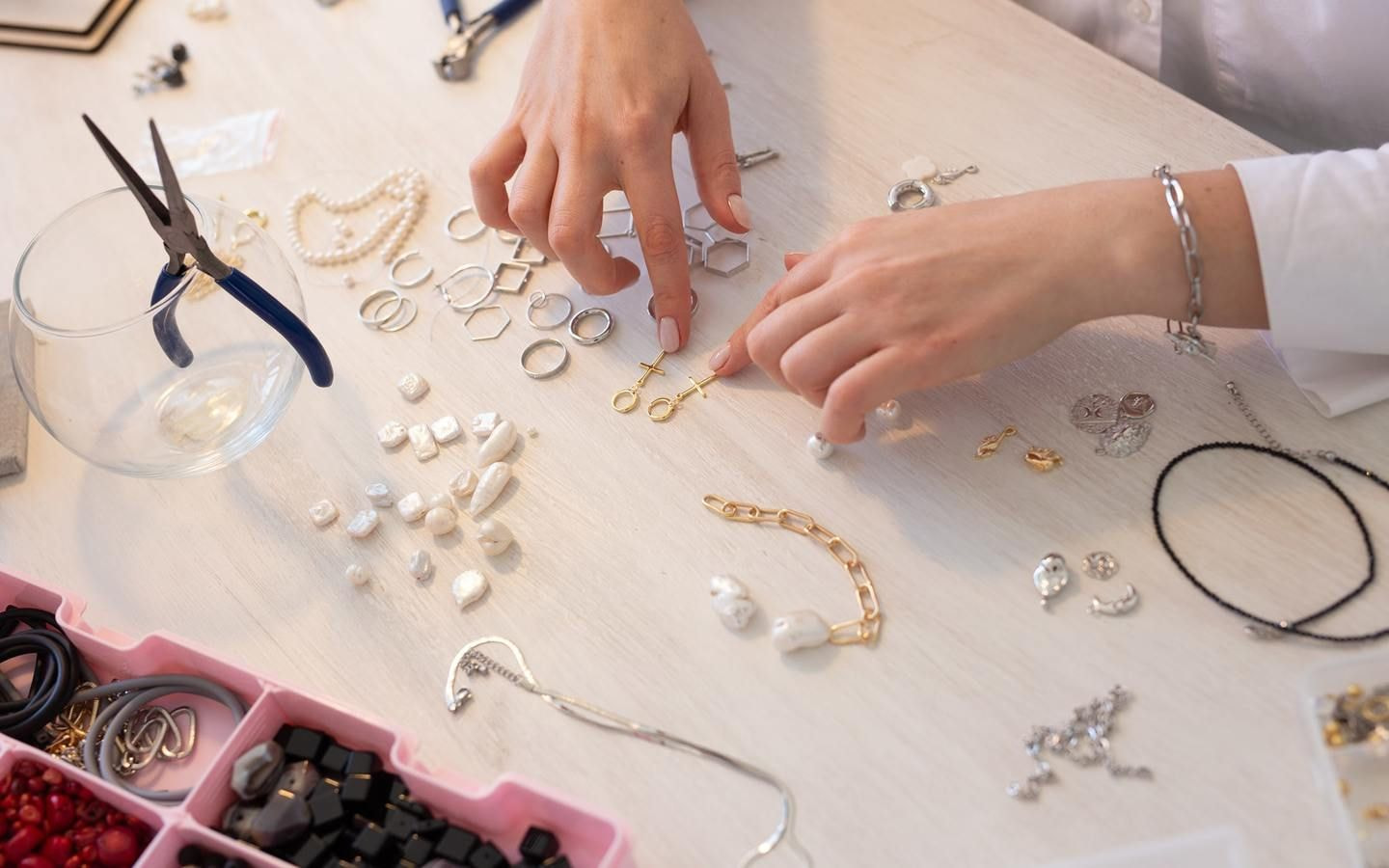Table of contents
The jewelry industry is shining brighter than ever in 2026, offering entrepreneurs endless opportunities. Shoppers want unique, personalized, and ethically sourced pieces, from handmade jewelry to fine engagement rings.
In this guide, you’ll learn how to start a jewelry business step by step – covering niches, business plans, online stores, marketing, and scaling – so you can grow your brand into a profitable success.
What is a jewelry business?

A jewelry business is any venture that designs, creates, sells, or distributes jewelry. It can take many forms, from a solo artisan crafting one-of-a-kind pieces to a large corporation supplying fashion accessories to department stores. At its core, every jewelry business transforms raw materials or curated designs into wearable art that people cherish.
As a jewelry business owner, one of your first decisions is choosing your business model. Will you run a physical retail store, an online jewelry business, or a combination of both? With today’s digital tools, many small businesses start by selling jewelry online – a low-cost way to reach customers worldwide. This approach lets you test your designs and build a customer base before committing to the higher costs of a brick-and-mortar location.
While the jewelry market is competitive, it offers plenty of room for growth. Success hinges on how well you define your jewelry brand, create unique jewelry designs that resonate with your target audience, and deliver excellent customer service.
Focus on these key areas to build a loyal following and establish your jewelry business in a crowded market.
Tip: Check out more trending products to sell on our blog.
How to start a jewelry business: Step-by-step guide
1. Define your niche and target audience
Before making your first piece or designing your website, define who you are and who you’re selling to. Choosing a specific niche helps you focus your jewelry production, marketing efforts, and brand message – making it easier to stand out.
Common niches include:
-
Handmade jewelry: Ideal for artisans who want to highlight craftsmanship. Sub-niches could include metalwork, beadwork, polymer clay, or wire-wrapped stones.

- Costume jewelry: This category focuses on affordable and trendy fashion accessories. It has mass appeal and is often driven by fast-moving trends.
-
Fine jewelry: High-value items made from precious metals and gemstones, such as gold pieces and diamond accessories. This niche commands higher prices but also requires significant investment and expertise.
-
Custom and personalized jewelry: This can include personalized engraved jewelry with names or dates, birthstone pieces, or print-on-demand jewelry where customers can customize designs.
Once you have a niche, identify your target market. Who are your potential customers? Creating a detailed customer persona is essential. Consider the following:
-
Demographics: Age, gender, income level, location, education, and occupation.
-
Psychographics: Lifestyle, values, interests, and personality. Are they eco-conscious, fashion-forward, sentimental, or minimalist?
-
Shopping habits: Where do they shop? Are they impulse buyers or careful researchers? Do they prefer shopping on Instagram, Etsy, or high-end websites?
For example:
-
Gen Z consumers: Might prefer affordable, trendy costume jewelry sold through TikTok and influencer collaborations. They value authenticity and brand engagement.

- Professionals (ages 30-50): May look for subtle, high-quality pieces like minimalist gold necklaces or unique artisan earrings that they can wear daily. Your potential customers in this group value quality and durability.
-
Couples: May search online for distinctive bridal jewelry or anniversary gifts, valuing craftsmanship and the story behind the piece.
To refine your understanding, conduct market research on the jewelry industry and current jewelry market trends. Analyze competitors in your chosen niche. What are they doing well? Where are the gaps you can fill?
Understanding your potential customers' needs will let you design desirable jewelry and create marketing strategies that speak directly to your target market.
2. Develop a business plan

A strong business plan is your roadmap. It provides structure, clarifies your goals, and is essential if you ever need to seek funding from investors or apply for a loan. This document will keep your jewelry venture organized and on track, even if you’re self-funding.
Your jewelry business plan should include:
-
Mission and vision: Define your jewelry brand’s purpose. What is your mission? What values guide your company? Your vision statement should describe your long-term goals for the jewelry business.
-
Business name and legal structure: Choose a memorable business name that reflects your brand and is available to register. Decide on a legal structure: sole proprietorship (easiest to set up), LLC (offers liability protection), or corporation. Consult a legal professional to understand the best fit for your own business.
-
Business model: How will you operate? Will you focus on a direct-to-consumer online model, sell wholesale to other retailers, use a dropshipping partner, or sell on consignment? Decide this early, as it impacts everything from pricing to marketing.
-
Financials: This is the most critical part of your plan.
-
Startup budget: Detail all expected costs to start a jewelry business, including materials, tools, website hosting, packaging, marketing expenses, and business license fees.
-
Pricing strategy: Determine how you’ll price your products. Calculate your cost of goods sold (COGS) and factor in labor, overhead, and your desired profit margin.
-
Financial projections: Create a forecast for your first one to three years of sales and expenses. This will help you understand your path to profitability.
-
Funding: If needed, outline how you’ll fund the business. To manage your finances professionally, open a separate business bank account to track all income and expenses.
-
Legal and logistical requirements: Research and obtain the necessary business license and permits required in your city, state, and country to sell jewelry. This may include a sales tax permit. If your designs are unique, consider protecting your jewelry brand with trademarks or copyrights.
-
Marketing strategy: Outline how you’ll reach your target audience. Detail your plans for social media, email marketing, content creation, and any traditional marketing methods you intend to use to generate sales.
Even a basic business plan will provide clarity and help you launch your own jewelry business with confidence.
3. Design and source your jewelry

Your jewelry line is the heart of your brand. To start selling jewelry online, you need a clear plan for design and production based on your skills, budget, and business model.
Options include:
-
Jewelry making: This is the path for artisans who create pieces themselves. It requires an investment in essential tools and materials but offers complete creative control. You could specialize in metalsmithing, beading, or working with alternative materials. This approach is the foundation of a true jewelry-making business.
-
Partner with jewelry designers: Collaborate with other jewelry designers to create exclusive collections. This can expand your offerings and bring new creative perspectives to your brand.
-
Work with manufacturers: Partner with jewelry producers who can bring your designs to life at scale. Whether local or overseas, success depends on clear technical specifications and strong quality control – both essential for sustainable growth.
No matter your production method, prioritize quality and sustainability. Today's consumers care deeply about where their products come from.
Ethical sourcing of metals and gemstones, using recycled materials, and adopting eco-friendly packaging aren’t just trends – they’re strong brand differentiators. Make your unique selling proposition reflect what truly sets your jewelry and brand apart.
4. Set up your online store

Selling online is the most accessible and cost-effective way to start a jewelry business in 2026. Your website is your digital storefront, so it needs to be professional, trustworthy, and beautiful.
This section explains how to start an online jewelry store that converts visitors into customers.
-
Choose your platform: Several excellent platforms are available for jewelry sales.
-
Shopify or WooCommerce: Ideal for building a standalone, fully branded website. They offer immense customization and control over your customer experience.
-
Etsy or Amazon Handmade: These popular online marketplaces provide access to a large, built-in audience looking for unique goods. They’re a great way to test demand before launching your own website. Many sellers use both a standalone site and a marketplace to maximize reach and visibility.
-
Build your online store: Design a user-friendly website that reflects your strong brand identity. Your logo, color scheme, and typography should be consistent across all pages. Consider adding an online jewelry website blog to share stories about your process, style guides, and industry news. This is excellent for search engine optimization.
-
Showcase your products: Professional photography is non-negotiable for an online jewelry business. Use high-resolution images that show your jewelry from multiple angles, on a model to show scale, and with close-ups to highlight details. Write compelling product descriptions that tell the story behind each piece, list all materials and dimensions, and include relevant keywords.
-
Optimize for conversion: Make the shopping experience seamless. Ensure your eCommerce store has simple navigation, a secure and straightforward checkout process, and clear policies for shipping and returns. Make your customer service details easy to find to build trust.
Your online jewelry store should be an inspiring and trustworthy space that makes customers feel confident in their purchase. This is a crucial step to sell online effectively.
5. Implement marketing strategies

Creating beautiful jewelry is only half the battle. To generate sales, you need a clear and consistent marketing strategy. Promoting your jewelry business online requires a multi-faceted approach that builds brand awareness and drives traffic to your store.
Effective marketing strategies:
-
Branding and storytelling: Build a strong brand identity that connects emotionally with your target audience. Share your story. Why did you start your jewelry business? What inspires your designs? People like to buy from people, and your story is a powerful marketing tool.
-
Social media marketing: Use visual platforms like Instagram, TikTok, and Pinterest to showcase your jewelry designs. Short-form video content is especially effective for fashion jewelry, allowing you to show how pieces move and catch the light. Behind-the-scenes content of your jewelry-making process can also build a strong following.
-
Influencer collaborations: Partner with influencers whose followers align with your target audience. This can be a highly effective way to gain credibility and reach new potential customers.
-
Email marketing: Build an email list by offering a small discount for new subscribers. Use email marketing campaigns to announce new jewelry items, share exclusive promotions, or tell customer stories. This is one of the best ways to nurture repeat business.
-
Search engine optimization (SEO): Use SEO techniques to attract organic traffic from search engines like Google. Use tools like Google Trends and Ahrefs to research keywords your target audience might use to find products like yours and incorporate them into your product titles, descriptions, and blog posts.
-
Content creation: Go beyond just selling. Write blog posts on topics like “How to Style Handmade Jewelry” or “Top Fashion Jewelry Trends for Fall 2026.” This positions you as an expert and drives relevant traffic to your online store.
Don’t forget traditional marketing methods. Attending local craft fairs, markets, and pop-up events can be fantastic for making in-person sales and getting direct customer feedback. A successful approach often combines digital and physical marketing efforts to give your jewelry brand maximum visibility.

6. Scale your business

Once your jewelry venture is stable and generating consistent revenue, you can focus on growth. Scaling a jewelry business requires strategic planning and reinvestment.
Methods for scaling include:
-
Expanding product lines: Introduce new jewelry designs to keep your collection fresh. You could expand into new categories, such as adding necklaces to a collection of earrings, or try new materials. You might also add new lines like costume jewelry or personalized engraved jewelry.
-
Wholesale opportunities: Develop a line sheet and pricing for wholesale buyers. Pitch your jewelry to boutiques, gift shops, or even larger department stores that align with your brand.
-
Retail store expansion: For established online brands, opening a physical retail store or a pop-up shop can be a powerful next step to complement your online presence and build a stronger community connection.
-
International sales: If you’re not already, offer global shipping through your eCommerce store. Research international shipping regulations and costs to expand your reach to a global audience.
As you grow, gather customer feedback through surveys and reviews. Use this data to refine your business model and product offerings. Invest profits back into effective marketing strategies that drive the most growth.
With patience and persistence, your small jewelry business can grow into a successful online store reaching customers worldwide.
Conclusion
Learning how to start a jewelry business in 2026 is easier than ever before. With a clear business plan, a well-defined target audience, and a strong brand identity, you can turn your passion for jewelry making into a thriving jewelry company.
Whether you focus on handcrafted artisan pieces, trendy fashion jewelry, or fine jewelry, the industry offers endless opportunities for creative entrepreneurs. The key is to start with a solid foundation. Begin small, build your presence as you sell online, and scale your jewelry venture by consistently delivering quality products and excellent customer service.
Your jewelry business journey begins today. Take the first step to create, market, and grow your brand with confidence. The world is waiting to see what you’ll create.
Jewelry business FAQ
Fine jewelry from precious metals and gemstones typically offers the highest profit margins per sale. However, the initial investment is also much higher.
For a new jewelry business, fashion and handmade pieces can be extremely profitable, especially when targeting a specific niche audience with a strong brand story and effective marketing. Profitability is less about the category and more about the strength of your brand and business model.
Start with a basic business plan to outline your niche, target audience, and budget. The most affordable way to begin is by building an online jewelry business through user-friendly platforms like Etsy or Shopify.
You can focus on jewelry making yourself to control costs or source affordable pieces to curate a collection. Once your online store is set up, sell jewelry online by implementing a focused marketing strategy on social media to attract your first customers.
Yes, a jewelry business can be very profitable. The jewelry market continues to show stable growth, and selling online allows for global reach with relatively low overhead costs compared to a physical retail store.
Success and profitability depend on factors like your pricing strategy, production costs, the perceived value of your brand, and your ability to reach your target market through effective marketing strategies. With a strong brand, you can run a successful jewelry business online that generates consistent sales.
You’ll need a general business license in most regions to operate your jewelry business legally. Depending on your location and what you sell, you may also require additional permits, such as a sales tax permit.
If you work with precious metals or gemstones, there may be specific regulations to follow. Always check your area's local, state, and federal requirements before you start selling.



Published author, scholar, and musician, Andris draws on over 11 years of experience in and outside academia to make complex topics accessible – from SEO and website building to AI and monetizing art. Devoted to his family and self-confessed introvert, he loves creating things, playing musical instruments, and walking around forests.





